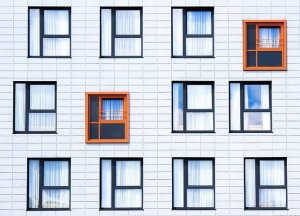Children with disability are the subject of Access Insight, the quarterly magazine from the access consultants association. The focus is on different formal and informal learning environments and how to make them more accessible. The magazine leads with an article on St Lucy’s School in Sydney and the final article is on technical specifications.
Architect Caroline Hart writes about St Lucy’s School which has a history of being a school for the blind. The first stage of the new development was a three-storey building with 16 purpose-built classrooms on two floors. A carpark and drop-off area formed the basement. Hart describes the project in detail, covering acoustics, lighting, communication and accessibility elements.
Designing accessible built environments is the minimum. Facilitating active participation and inclusion of children with different needs, strengths, and abilities informs practitioners’ approach to procurement, design, and delivery of spaces and places.
Image: Stanton Dahl Architects

Designing with children with disability is discussed by Mary Ann Jackson and Illanna Ginnis. Creating a design process with children with disability breaks down traditional communication structures. However, this is not without challenges. But how to make these processes inclusive using mainstream architectural thinking and design processes? Jackson and Ginnis explain their methods in their article.
Lynda Wilem tackles the subject of hearing augmentation and inclusion in the classroom. She discusses the established augmentation systems and their benefits and drawbacks. There is new technology on the way using Bluetooth systems which are already available on smart phones that connect to hearing aids. Wilem adds that augmentation systems are only part of the solution for children with low hearing.
And there’s more…
Indoor play centres is the subject of Vanessa Griffin’s article. She tells the story of advocating for an inclusive play centre in her local government area. Designer, Many Lau, raises the subject of diversity and creating supports for children in early learning centres. Allen Kong gives an overview of “Golden Cubes Awards”, a project run by the International Union of Architects. Technical aspects of handrail design for children is covered by Howard Moutrie.
You can view the magazine on issuu, and there is an option to download the 9MB PDF magazine which you might find easier to read.



 Todd Brickhouse’s Newsletter has some interesting
Todd Brickhouse’s Newsletter has some interesting  Of course, a custom design for your own home should work for you if not others.
Of course, a custom design for your own home should work for you if not others.  How do you know what older people want in their bathroom design? Simple. Ask them. And have lots of Post It Notes handy. Having a more flexible and safer bathroom at home is one of the keys to ageing in place. Knowing “what’s best” is not necessarily in the hands of design experts or health professionals. Co-designing bathrooms with older people is a better option.
How do you know what older people want in their bathroom design? Simple. Ask them. And have lots of Post It Notes handy. Having a more flexible and safer bathroom at home is one of the keys to ageing in place. Knowing “what’s best” is not necessarily in the hands of design experts or health professionals. Co-designing bathrooms with older people is a better option. Richard Voss reminds us that all of us are ageing all the time. Consequently, we need to think ahead in the design of our cities. He makes a good point that by the time the ink dries on new access codes they are already out of date. His
Richard Voss reminds us that all of us are ageing all the time. Consequently, we need to think ahead in the design of our cities. He makes a good point that by the time the ink dries on new access codes they are already out of date. His  It’s so much easier to measure outputs than outcomes. Social value is an outcome, but how do you measure it? Well the answer for most is, it’s too hard so don’t bother. The Fifth Estate features an article about why the building industry should measure the social value of good design.
It’s so much easier to measure outputs than outcomes. Social value is an outcome, but how do you measure it? Well the answer for most is, it’s too hard so don’t bother. The Fifth Estate features an article about why the building industry should measure the social value of good design. 






